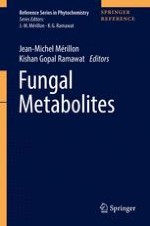2017 | OriginalPaper | Chapter
22. Antioxidant Activities and Metabolites in Edible Fungi, a Focus on the Almond Mushroom Agaricus subrufescens
Authors : Régulo Carlos Llarena-Hernández, Elodie Renouf, Xavier Vitrac, Jean-Michel Mérillon, Jean-Michel Savoie
Published in: Fungal Metabolites
Publisher: Springer International Publishing
Activate our intelligent search to find suitable subject content or patents.
Select sections of text to find matching patents with Artificial Intelligence. powered by
Select sections of text to find additional relevant content using AI-assisted search. powered by
